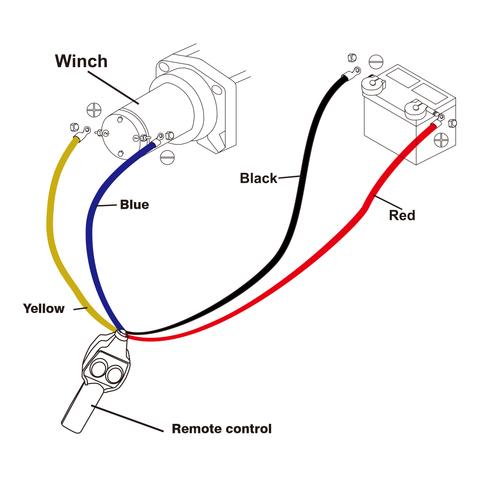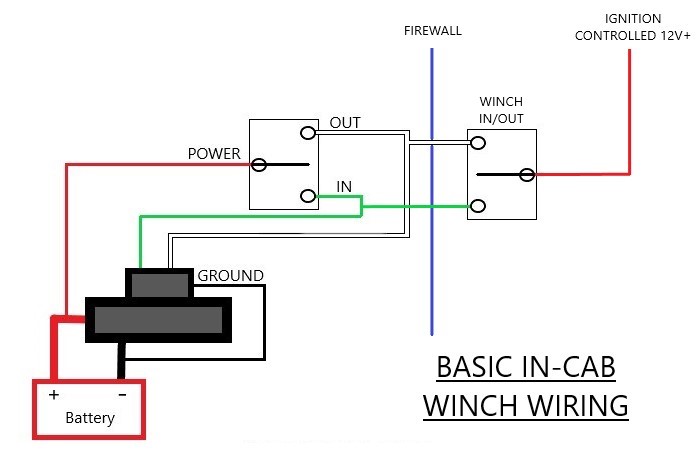If you’re struggling to connect a winch using a toggle switch, don’t worry! I’m here to teach you how.
But before we dive into the details, Here’s how to wire a winch with a toggle switch in four simple steps:
- Disconnect the negative battery cable of your 4×4.
- Access the winch’s relay box and wiring.
- Run the necessary wires from the winch to your vehicle’s cab.
- Install and connect the toggle switch in your preferred location.
Stick around as I’ll be delving into the convenience and advantages of using a toggle switch, essential safety tips, and a more detailed walkthrough of wiring a winch with a toggle switch
Let’s start
What is a Toggle Switch Anyway?
A toggle switch is like a tiny gateway to power and control. It’s a small mechanical lever connected to an electrical circuit that can activate a motor and bring a device to life.
How Does a Winch With Toggle Switch Work
The whole mechanism of how a winch works when wired to a toggle switch is very simple.
As you flip that switch to the “on” position the electrical circuit completes, allowing a current to flow igniting the winch motor.
And when you move the switch to the “off” position the circuit breaks, abruptly halting the flow of power, and the winch stops.
It’s incredible how using a mere toggle switch you can control a winch.
How To Wire A Winch With A Toggle Switch?
Creating in-cab winch controls is surprisingly easier than you’re expecting.
I installed a Toggle switch for my winch right by my driver’s seat, inside the vehicle. And you can do so following three simple stages.
Trust me, when you are done with the below steps, you’ll have the winch ON/OFF switch right next to your driver’s wheel, so you won’t have to use the winch remote switch anymore.
Stage-1: What To Do Before Installing the Toggle Switch
- The first step is to disconnect all power sources. To do that, turn off the vehicle engine or ignition. Then, find the toggle switch and the 3 colored wires (red, yellow, green) connected to it.
- Now, disable the winch clutch.
- Then, get a hold of the yellow and green wires, and disconnect one of the spade connectors. At this point, the spade connectors aren’t necessary anymore as we will use wire splices.
Stage-2: Winch Toggle Switch Wiring
- Firstly, you’ll have to place the Tube Clamp-on handlebars in a handy location.
- Now, take advantage of tools such as capscrew, flat washer, locknut, shake-resistant washer, etc. to tightly and securely install the housing of the toggle switch.
- Then, pass the 3 colored wires (red, green, yellow) through the rear position of the switch’s housing.
- In this step, it’s time to install the Gasket. So, go ahead and install it on the toggle switch housing.
- Now, you will securely attach the Yellow-colored wire to the toggle switch’s upper terminal. Then, you will also attach the red-colored wire to the mid-positioned terminal. At last, the green-colored wire will also be firmly attached to the lowermost positioned terminal.
- At this point, you will slide the 3 colored wires (red, green, yellow) inside the loom. You will also slide up the loom onto the back position of the switch accommodation.
- Now, snap the switches and the housing of the switches at the same time.
- Then, create a wire routing from the terminals of the toggle switches towards the handlebars. Make sure that you have ample clearance of the handlebar by moving it left or right for once.
- At last, attach the yellow-colored wire to the wire splicing and put a clip on the joint. And snap the clip closed. Then, repeat the same process for the green-colored and red-colored wires for their respective connection points.
Stage 3: Testing the Toggle Switch
- Ensure that the clutch of the winch is disabled.
- When having the ignition switch in OFF mode, press the OUT button in the toggle switch. By doing this, the winch should not start operating. If you indeed see your winch getting started, you have to revise the connections of the toggle switches again.
To revise your toggle switch connections, you can use the 2 wire winch wiring diagram as below:

Or, you can also use the 3 wire winch switch wiring diagram as well:

- Now, unwind a few meters of your winch cable and turn ON the clutch of the winch.
- Again, turn ON the ignition and press the OUT button in the toggle switch. As a result, you should see the winch spooling out the cable.
- But, if you don’t see the winch starting spool out, you should check its wirings again and ensure that the colored wires are appropriately engaged to their respective places.
- At last, ensure that the wires have not been routed through any surface that could decay or damage them. To do that, you can use cable clips to anchor the wires.
Benefits of Operating Winch with Toggle Switch
Here’s why you shuld consider using toggle switch for your winch:
- Convenience: Control the winch from inside the vehicle, saving time and effort.
- Cost-effective: Affordable option for winch operation.
- Enhanced control: Provides precise adjustments and maneuvering.
- Waterproofing: Easy to seal, ensuring protection against water damage.
- Toggle switches are highly durable.
- Compact size suitable for various applications.
Precautions To Keep In Mind When Wiring Winch With Toggle Switch
Always keep in mind the following things to safeguard yourself and the components from any damage when wiring a winch with a toggle switch:
- Choose a dry installation area to work safely.
- Ensure the vehicle’s ignition is off before wiring.
- Gain prior knowledge through installation guides or videos before starting the wiring process.
- Wear appropriate protective gear such as rubber gloves and shoes.
- Cease using faulty equipment or if it appears to be malfunctioning.
- Avoid water exposure during the wiring process.
- Double-check that the ignition is off to prevent circuit damage.
- Refer to the manufacturer’s installation guide for specific instructions tailored to your winch and toggle switch.
Some Extra Handy Tips:
To easily pull off the above-mentioned winch rocker switch wiring process, you can follow these extra tips:
- Use the Nilight 90005B as your toggle switch. It’s one of the best 12 volt winch control switches out there.
- Or, you can also use the Warn Winch Controller 5 pin edition. For high-quality winches, this is a premium product that has a very positive reputation.
FAQ:
Is one wire always hot on a 3-way switch?In short, No. The wire that brings the electricity from the power source to the 3-way switch is sometimes termed as the hotwire. It doesn’t necessarily mean that it’s literally hot in terms of temperature. It simply means that it’s the most important wire in a 3-way switch.
What is the white wire in a 3-way switch?
Usually, the white wire is the neutral wire of the circuit. Its main purpose is to complete the whole circuit.
What happens if you wire a 3 way switch wrong?
Since the switch works on a 12 volt electrical connection, there won’t be any major electrical surge if you wrongly wire a 3 way switch. But, by doing that, you can fully damage the switch within seconds.
How can I tell which wire is common on a 3 way switch?
Usually, the black wire is the common wire in a 3 way switch. For more clarity, you can use this video\ to recognize the common wire.
What color wires go on a 3 way switch?
There’s no standardized color format for wiring a 3-way switch. So, there’s no way to tell which color wires will be there on a 3 way toggle switch.
In short, No. The wire that brings the electricity from the power source to the 3-way switch is sometimes termed as the “hot” wire. It doesn’t necessarily mean that it’s literally hot in terms of temperature. It simply means that it’s the most important wire in a 3-way switch.
Usually, the white wire is the neutral wire of the circuit. Its main purpose is to complete the whole circuit.
Since the switch works on a 12 volt electrical connection, there won’t be any major electrical surge if you wrongly wire a 3 way switch. But, by doing that, you can fully damage the switch within seconds.
Usually, the black wire is the common wire in a 3 way switch. For more clarity, you can use this video to recognize the common wire.
There’s no standardized color format for wiring a 3-way switch. So, there’s no way to tell which color wires will be there on a 3 way toggle switch.